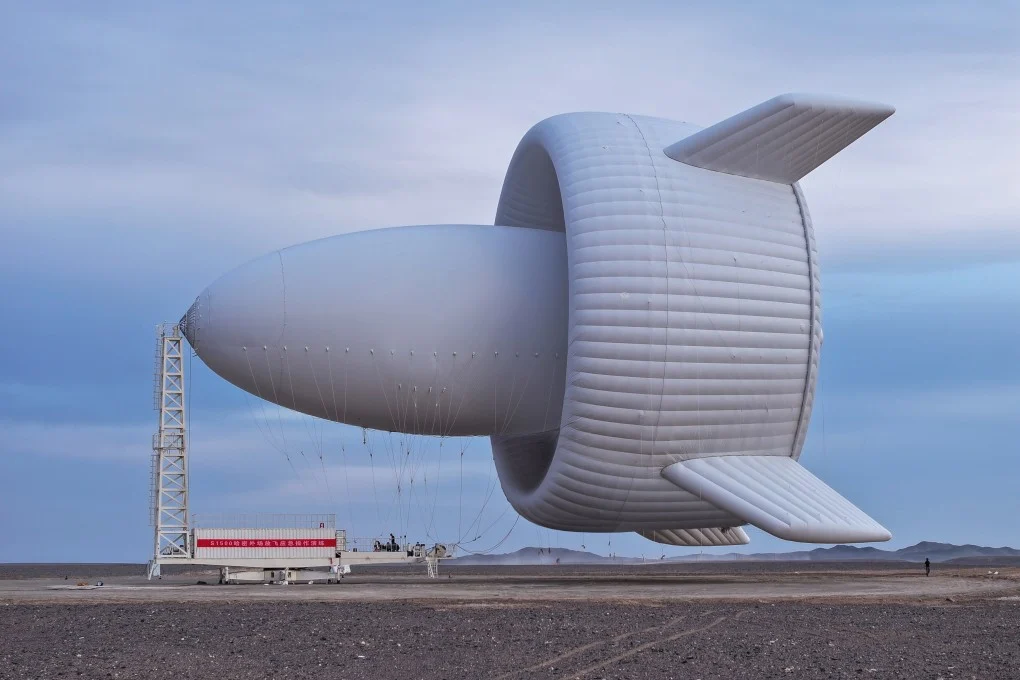China has taken a major leap in renewable energy technology with the successful flight of an advanced airborne wind turbine capable of generating energy at the megawatt scale.
Harnessing High-Altitude Winds
The idea behind airborne wind turbines (AWTs) is simple but powerful — capture the stronger, steadier winds found at higher altitudes. These systems are designed to float hundreds or even thousands of meters above the ground, where wind speeds are more consistent and energy potential is far greater than at ground level.
The Origins: From MIT to the Skies
The concept isn’t entirely new. Back in 2014, Altaeros Energies, an MIT startup, launched the world’s first airborne wind turbine — the Buoyant Air Turbine (BAT).
The BAT used a helium-filled shell to lift a turbine between 1,000 and 2,000 feet (300–600 meters) in the air. Three tethers connected the airship to a rotating ground station, allowing it to automatically adjust its altitude to capture optimal wind speeds. Power generated in the turbine traveled down one of these tethers to the ground, where it was distributed to local microgrids.
Rather than replacing traditional wind farms, the BAT’s goal was to deliver reliable, clean power to remote and off-grid regions where building conventional wind towers is logistically difficult and costly. Ground-based wind turbines often require weeks of installation work, heavy equipment, and clear transport routes — obstacles that airborne systems can bypass entirely.
At higher altitudes, wind speeds can be up to twice as fast and deliver five to eight times more power density than near the surface. Yet despite its promise, the BAT and other early prototypes struggled to gain commercial traction in the U.S.
China’s Breakthrough: The S1500 Airborne Wind Turbine
Fast forward to today, and China’s S1500 airborne wind turbine, developed by SAWES (Shanghai Airship Wind Energy Systems), is redefining what’s possible in this field.
The S1500 is one of the largest airborne wind systems ever built, measuring 60 meters long, 40 meters wide, and 40 meters tall. Unlike Altaeros’s single-turbine BAT, the S1500 features twelve turbines distributed around the ring-shaped structure between its inner cone and outer rim.
Constructed with lightweight carbon fiber generators, the S1500 weighs under one tonne. The turbine generates electricity onboard and transmits it to the ground through a power cable integrated with its mooring line.
Scaling Up: From S500 to S1500
SAWES has been steadily scaling its technology:
- S500: Generated 50 kW at 500 meters altitude.
- S1000: Produced 100 kW at 1,000 meters.
- S1500: Now delivers 1 MW of power at 1,500 meters, where winds are approximately three times faster than those at ground level.
This boost in efficiency makes the S1500 ideal for disaster relief, emergency power supply, and remote-area operations — locations where rapid deployment and reliable energy are critical.
Overcoming Engineering Challenges
One of the biggest challenges for any airborne wind system is helium leakage, which can shorten operational life and increase maintenance costs. SAWES claims the S1500 incorporates advanced containment systems that minimize gas loss, ensuring continuous operation for over 25 years.
Looking Ahead
SAWES is already planning larger, higher-altitude versions of its airborne turbines with even greater power capacity. As the technology matures, airborne wind systems could become a vital complement to traditional renewable sources — offering clean, portable energy solutions for regions previously out of reach.
In short: China’s S1500 project represents a new chapter in renewable innovation, combining aerospace engineering with sustainable energy. If successful on a commercial scale, airborne wind turbines may soon turn the open skies into a vast, untapped source of green power.
